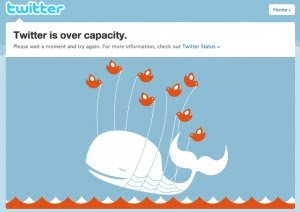By Nicole Garner
We’ve all seen it – and we might have all done it, too. But at what point does quickly tweeting what we think is factual… become careless?
Last week, news media throughout the nation pounced upon reports that more than 30 bodies were found at a Texas home – but to many tweeters’ surprise – what they saw reported from credible news sources wasn’t true. In fact, it was nowhere close.
Houston authorities investigated a property following a tip from a self-proclaimed psychic, suggesting nearly 30 bodies would be found at the residence. And while authorities surveyed the area, finding not one body, news organizations kept reporting that bodies, some of children, others, dismembered, had been found at the Houston home.
Within hours, CNN and other organizations posted articles and blogs recanting their earlier tweets. But days later, other news media are analyzing the entire incident; a story that wasn’t news at all, and how news organizations are heading too quickly to Twitter and not fast enough to sources for verification.
While Twitter has become a go-to source for breaking news, it’s also become a virtual game of “telephone,” where one misinformed tweet can cycle into hundreds of newsfeeds, reproducing thousands of incorrect responses and retweets.
In the rush to get information out and into the hands of readers, sometimes tweets are posted before they’re verified. But it’s not only an issue major news organizations might experience – it’s a problem that exists throughout the Twittersphere and even at Mizzou.
After the resignation of Mizzou basketball coach Mike Anderson, a media frenzy on both social media and news sites ensued, targeting multiple coaches as Mizzou’s new hire. As Mizzou’s athletics department held talks with prospectives like Purdue coach Matt Painter, sports sites blogged and tweeted, some confirming Painter’s switch to Mizzou.
When Painter confirmed his choice of staying at his alma mater, more confusion followed, with Missouri fans questioning who would take Anderson’s place. And as Missouri revealed its new coach, Frank Haith, a new Twitter storm arose, with fans, bloggers and journalists questioning the choice of a coach whom many had never heard of.
The entire scenario lends its hand to questions about social media ethics. ONA Mizzou held a Brown Bag discussion and live blog, using the incident as a case study for the best practices when using social media to spread news.
If the search for Mizzou’s next coach wasn’t enough of a social media fiasco, another prime example is the use of Twitter in the “Brad Pitt Incident” of 2011. When reports of Brad Pitt sightings were tweeted, Mizzou’s campus became a hunting ground for the celebrity. A rush of tweets throughout the afternoon seemed to confirm Pitt’s appearance on campus, others making convincing arguments as to why the former Mizzou student would be visiting. Once again, another incident where misinformation online quickly spread, creating a real world frenzy.
If Mizzou isn’t able to escape erroneous tweets, as journalists, what do we do?
While every journalist who has a social profile seems to have their own ideas about Twitter etiquette, Robert Niles of the Online Journalism Review brings up a good point:
“Other abbreviations that should find a home in a Twitter style include HT (Hat Tip, or Heard Through) for acknowledging the source through which a reporter heard the information she or he is tweeting, and RR for a repeated tweet.”
Still, Ryan Murphy, Digital Media Editor at the Radio Television Digital News Association has set guidelines for using social media – primarily for Twitter:
“A good rule of thumb before sharing any piece of content, particularly a re-tweet, is to ask yourself how the information, if proven to be false, will reflect on your news organization. In the event you do share or tweet something false, understand that there are measures to correct the error. Be transparent as possible.”
Are these ideas enough to help prevent Twitter stirs from false information? What more should journalists be doing to avoid being incorrect, but still timely?
Join in the discussion and let us know what you think.



No comments:
Post a Comment